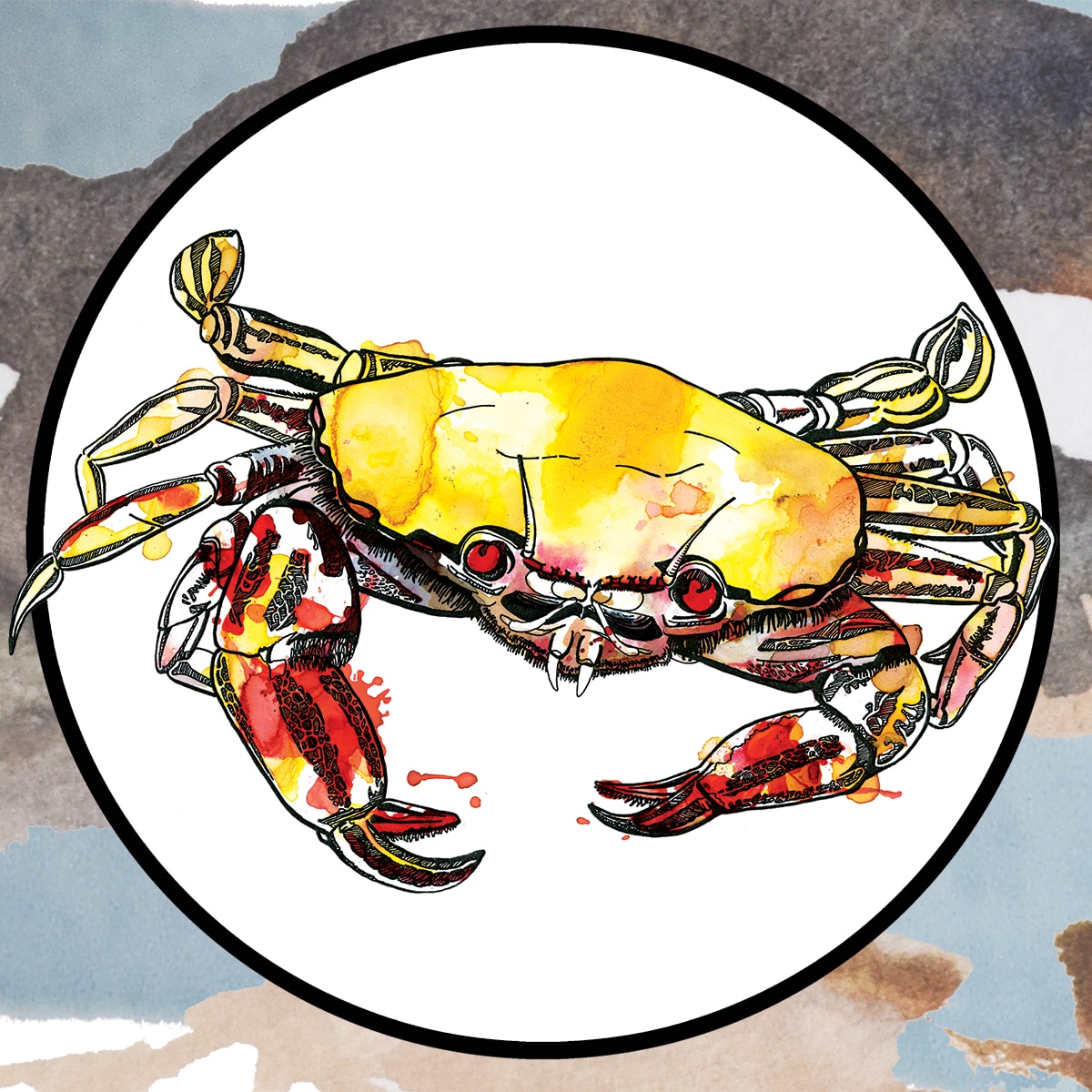This Spring we have given over our windows to highlight the range of diverse wildlife we have on our local coastline. Sussex is home to many miles of shores, and a plethora of species, some quite surprising.
One of the best ways to discover this wildlife for yourself is by going rockpooling. In collaboration with the Sussex Wildlife Trust, the banners in our window highlights the beauty of our coastline, and just a few of the most common flora and fauna you can find at low tide. Rockpools can be a microcosm of life under the deeper sea and is a great way to fall in love with these amazing ecosystems.
In this 2-part post we offer a mini guide to the creatures featured on our banners:

- Common Mussel – These hardy molluscs live on rocks and are bivalves, having two shells that can be pulled closed using a specially adapted strong muscle. Threads join the mussel to the rock and siphons suck in water and food and squirt out water and waste.

2. Bladderwrack is a large olive-brown coloured seaweed, which attaches to rocky surfaces by means of a small disc. The flattened, branching fronds, which grow up to 2m in length are covered with spherical air bladders, which tend to occur in pairs on either side of the mid-rib. The appearance of bladderwrack varies depending on the environmental conditions in which it occurs; in more sheltered areas there are many air bladders, whereas there are fewer in more exposed conditions. The air bladders keep the fronds of the wrack boyant and near the surface when submerged where it is able to photosynthesise.
Bladderwrack may live for up to three years. There are separate male and female plants, and reproduction takes place once a year. Bladderwrack provides shelter for a number of marine species, including the tubeworm Spirobis spirobis, various isopods, and snails. It has been harvested by humans for use as a food source, and in various health products.

3. Beadlet anemone – The beadlet anemone is the most familiar sea anemone in Britain. When disturbed or exposed to air at low tide it appears as a bright red blob of jelly, but when feeding up to 192 beautiful stinging tentacles emerge, arranged in 6 circles around the mouth. The smooth ‘body’ of the anemone, correctly known as the column, is usually bright red but may be greenish or brown, with blue, green or yellow spots. There is often a brilliant blue line around the adhesive base, and bright blue spots (known as acrorhagi) containing stinging cells are located at the top of the column. Prey is caught with the stinging tentacles and passed to the mouth. Although often thought of as static animals, they are able to move by sliding the base along the ground. They have even been shown to slowly move away from predators such as sea-slugs when facing attack. Amazingly, they are even aggressive to neighbouring beadlet anemones. When the tentacles of two adjacent anemones come into contact, one will sting the other, leading to the other individual being forced to move away.

4. Common starfish – The common starfish (Asterias rubens) has five arms (although individuals may occasionally have just four or as many as six). The colour of the common starfish varies from red to yellowish-brown and more rarely violet. The upper surfaces of the arms feature a row of spines along the centre, and the underside has rows of ‘tube-feet’, which have suckers at the tips. This predatory species takes a range of marine prey including other echinoderms (sea urchins, starfish and brittlestars), worms and molluscs as well as carrion. It often prizes bivalve shells apart, using the suckers on the tube-feet. Once a small gap has been opened, the common starfish inserts the lobes of its stomach inside the shell, and starts to digest the bivalve. This starfish has a good sense of smell, which helps it to locate its prey and avoid predators. Some of its prey species are able to smell the starfish as it approaches and avoid it.
The life-span of a common starfish is between 5 and 10 years. Large groups occasionally form, of around 100 individuals per square metre. It is not known what triggers this.
Join us next week for the second part of this mini guide to rockpool life!
Info from the Wildlife Trust on the best sites around the country can be found here.
Illustrations by Felicity Price-Smith & Amy Hope.
Info sourced from arkive.org



